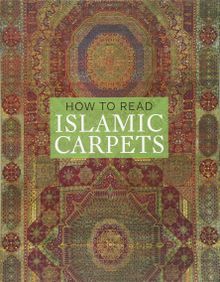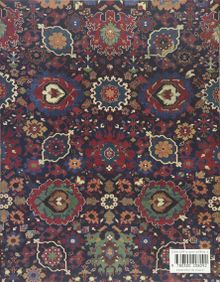Difference between revisions of "How to Read Islamic Carpets"
(Created page with "{{Infobox Book |above = |image = 220px |caption = |image2 = File:Islamic Carpet 1-Walter Denny-WikiR...") |
|||
| (One intermediate revision by one other user not shown) | |||
| Line 22: | Line 22: | ||
}} | }} | ||
'''''How to Read Islamic Carpets (The Metropolitan Museum of Art - How to Read)''''' by create by Walter Denny. Carpets made in the “Rug Belt”―an area that includes Morocco, North Africa, the Middle East, Central Asia, and northern India―have been a source of fascination and collecting since the 13th century. This engaging and accessible book explores the history, design techniques, materials, craftsmanship, and socioeconomic contexts of these works, promoting a better understanding and appreciation of these frequently misunderstood pieces. Fifty-five examples of Islamic carpets are illustrated with new photographs and revealing details. The lively texts guide readers, teaching them “how to read” clues present in the carpets. Walter B. Denny situates these carpets within the cultural and social realm of their production, be it a nomadic encampment, a rural village, or an urban workshop. This is an essential guide for students, collectors, and professionals who want to understand the art of the Islamic carpet. | '''''How to Read Islamic Carpets (The Metropolitan Museum of Art - How to Read)''''' by create by Walter Denny. Carpets made in the “Rug Belt”―an area that includes Morocco, North Africa, the Middle East, Central Asia, and northern India―have been a source of fascination and collecting since the 13th century. This engaging and accessible book explores the history, design techniques, materials, craftsmanship, and socioeconomic contexts of these works, promoting a better understanding and appreciation of these frequently misunderstood pieces. Fifty-five examples of Islamic carpets are illustrated with new photographs and revealing details. The lively texts guide readers, teaching them “how to read” clues present in the carpets. Walter B. Denny situates these carpets within the cultural and social realm of their production, be it a nomadic encampment, a rural village, or an urban workshop. This is an essential guide for students, collectors, and professionals who want to understand the art of the Islamic carpet. | ||
| + | |||
[[Category:Books]] | [[Category:Books]] | ||
{{italic title}} | {{italic title}} | ||
Latest revision as of 14:31, 26 July 2020
How to Read Islamic Carpets (The Metropolitan Museum of Art - How to Read) by create by Walter Denny. Carpets made in the “Rug Belt”―an area that includes Morocco, North Africa, the Middle East, Central Asia, and northern India―have been a source of fascination and collecting since the 13th century. This engaging and accessible book explores the history, design techniques, materials, craftsmanship, and socioeconomic contexts of these works, promoting a better understanding and appreciation of these frequently misunderstood pieces. Fifty-five examples of Islamic carpets are illustrated with new photographs and revealing details. The lively texts guide readers, teaching them “how to read” clues present in the carpets. Walter B. Denny situates these carpets within the cultural and social realm of their production, be it a nomadic encampment, a rural village, or an urban workshop. This is an essential guide for students, collectors, and professionals who want to understand the art of the Islamic carpet.

